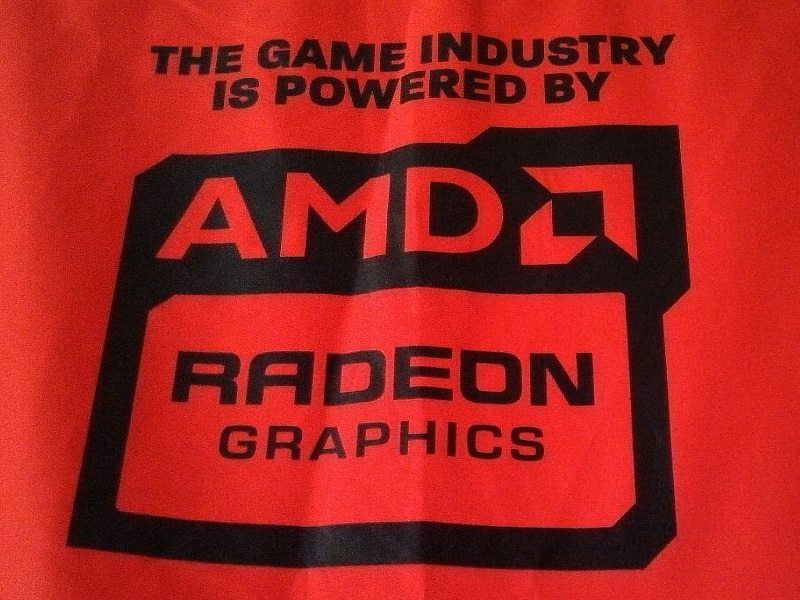AMD APUs Get Better Proformance in Windows 8.1
AMD worked with Microsoft to get a performance boost on in Windows 8.1.

On Friday during Windows 8.1's general availability, Clarice Simmons, a Senior Marketing Manager at AMD, updated the company blog with a report that customers with AMD hardware should see up to 9.5 percent better performance on the same hardware after upgrading to the latest Windows release. That's due to a dedicated group of AMD techs that worked alongside "critical" developers and product groups at Microsoft.
"Our work with Microsoft includes development on the essential operating system 'plumbing' that enables Windows to directly leverage AMD technology in order to run more efficiently," Simmons writes. "The two companies also cooperate on the development and tuning of the latest AMD video drivers."
According to the company, the A10-6800K sees a 106 percent increase in Windows 8 vanilla when updating from video driver 13.101.00-03-JUN-2013 to 13.200.11.0-03-SEP-2013. The same chip sees a 109.5 percent increase using the same drivers after updating to Windows 8.1. These numbers stem from the PCMark 8 Home Test.
"Of course AMD's fast CPU and GPU cores contribute to high performance, but having software that is optimized to take advantage of the AMD hardware architecture is a significant advantage," she continues. "Tuning our device drivers to simultaneously suit AMD hardware, software applications, and Windows 8.1 makes systems more streamlined."
The company compares the A10-6800K APU with Intel's Core i5-4670K in one diagram, showing a 113 percent performance increase in Windows 8.1 over Intel's chip in Basemark CL 1.0.1, and a 146 percent increase in the FireStrikeX benchmark in 3DMark for Windows 8. The APU also sees a 138 percent performance increase in the FireStrike benchmark, and a 139 percent increase in the Extreme benchmark in 3DMark 11.
"Note that in addition to delivering great overall performance on AMD-based PCs, Windows 8.1 also includes Internet Explorer 11 with support for WebGL to enable additional experiences accelerated by AMD APUs and GPUs," the blog reads. "With the emerging WebGL web standard, web developers can create new kinds of 2D and 3D experiences by programming the GPU directly to quickly render complex 3D objects and scenes. AMD collaborates with Microsoft in this area to deliver optimized WebGL performance."
She goes on in the blog to talk about AMD's collaboration with Microsoft on native Miracast support, which focused on three key elements: architectural definition and implementation, ecosystem support, and low latency solution enablement. For the latter, Simmons reports that AMD worked with Microsoft to enable Miracast to leverage the built-in low latency display encode paths that are part of AMD Radeon and AMD APU products that support the AMD Advanced Video Converter (Video Codec Engine or VCE).
Get Tom's Hardware's best news and in-depth reviews, straight to your inbox.
To read the full blog and see more performance comparisons, head here. For the record, I've noticed a definite performance increase on my AMD A8-based laptop in Windows 8.1 despite all the moaning and groaning I did during the super-long update process. The update was definitely worth the wait. (And too bad I didn't benchmark prior to updating to back my claim. Sorry.)
Follow us @tomshardware, on Facebook and on Google+.

Kevin Parrish has over a decade of experience as a writer, editor, and product tester. His work focused on computer hardware, networking equipment, smartphones, tablets, gaming consoles, and other internet-connected devices. His work has appeared in Tom's Hardware, Tom's Guide, Maximum PC, Digital Trends, Android Authority, How-To Geek, Lifewire, and others.
-
shikamaru31789 Good news for those with AMD APU's. I might just get a computer with an APU at some point in the future, so this news makes me happy.Reply -
flyflinger Title as of right now reads "AMD APUs Get Better Proformance...." Kevin!!! Are you in Starbucks typing this up on your iPhone?Reply -
cklaubur I think the graph comparing the APU to the Core i5-4670K may have been interpreted wrong in this article. If I understand the graph correctly, the APU has a 13% increase over the i5 on Basemark, a 46% increase in FireStrikeX, a 38% increase in FireStrike, and a 39% increase in the Extreme benchmark.Reply
The numbers listed in the article implies that the APU used in the test has doubled performance over the i5 just with a driver update.
Casey -
unksol Reply11766739 said:I think the graph comparing the APU to the Core i5-4670K may have been interpreted wrong in this article. If I understand the graph correctly, the APU has a 13% increase over the i5 on Basemark, a 46% increase in FireStrikeX, a 38% increase in FireStrike, and a 39% increase in the Extreme benchmark.
The numbers listed in the article implies that the APU used in the test has doubled performance over the i5 just with a driver update.
Casey
The articles wrong anyway. They are simple performance comparisons against the i5, not new increases from the drivers/changes. Those are mostly graphics tests and the APU's graphics were always superior to the i5. -
CaedenV For the last 10 years or so I have been a pretty big fan of Nvidia products, but all of this work with the CB1, and the Mantle project, and articles like this are really making me think that my next GPU will be an AMD one. Nvidia still has the hardware advantage, but they have been so self-absorbed developing their portable device and screen streaming technology that they are falling behind in the way of software support.Reply
But then again I am still a solid year away from an upgrade, so maybe Nvidia will get it all figured out by then? -
ferico87 Wow! I can get 139% proformance increase with a driver update. Time to go buy an APU.Reply -
anxiousinfusion APUs keep looking more an more attractive. I imagine I may get one by the time Kaveri 2.0 or Carrizo roll out.Reply